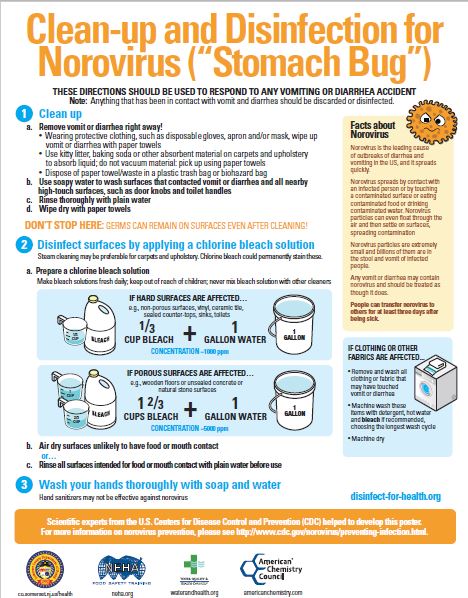Reminders from Karen Gulley, Food Program Manager
In food service establishments, ice may be used for such purposes as keeping food cold, making drinks cool and refreshing, and as an ingredient—among other things. Microorganisms may be found in ice, ice-storage chests, and ice-producing machines. According to the Centers for Disease Control and Prevention (CDC), these microorganisms get into the ice mainly as a result of transfer from a person’s hands or due to the potable (drinking) water source used. Examples of microorganisms that cause human infection from ice include Legionella from potable water, Norovirus and Cryptosporidium from water containing fecal contamination, and Salmonella transferred from a person’s hands.
Thus, importance should be placed on keeping ice protected from contamination in the food service establishments by ensuring good handling practices which includes effective handwashing, using and properly storing a clean, impervious scoop with a handle, and not allowing bare hand contact with ice used for consumption. Another big area of emphasis should be the cleaning and maintenance of ice machines.
During food service inspections, ice machines and ice storage units and dispensers are often marked as being out of compliance. As shown in these “before and after” pictures provided courtesy of WeCleanIce.com, the cleaning of the inside of ice machines is warranted but often overlooked when scheduling times for the thorough cleaning of equipment. Manufacturers of ice machines usually provide instructions for their cleaning, however, if instructions are not available, check out the guidance provided by the CDC on page 80 of their Guidelines for Environmental Infection Control in Health-Care Facilities. Other helpful information regarding the importance of keeping ice safe is provided in the document as well.








 gle vomiting incident can release 300,000 or more of these viral particles into the environment. And perhaps worst of all, not all disinfectants are effective at destroying norovirus. If surfaces that become contaminated with vomit or diarrhea are not disinfected properly, norovirus can survive for several days or even weeks!
gle vomiting incident can release 300,000 or more of these viral particles into the environment. And perhaps worst of all, not all disinfectants are effective at destroying norovirus. If surfaces that become contaminated with vomit or diarrhea are not disinfected properly, norovirus can survive for several days or even weeks!